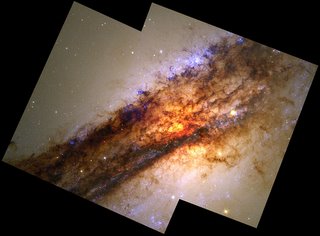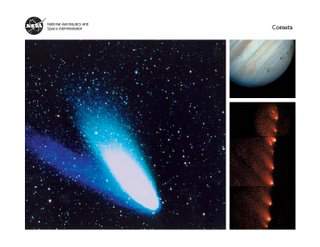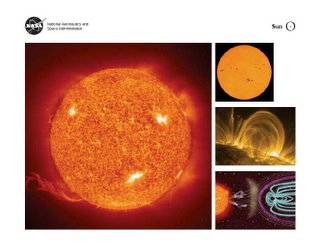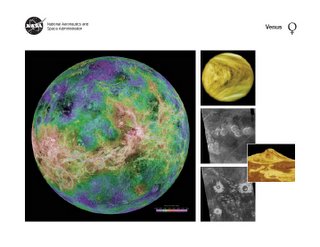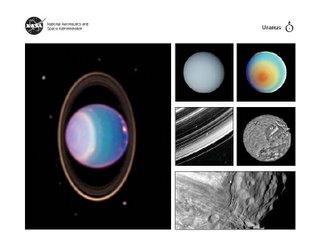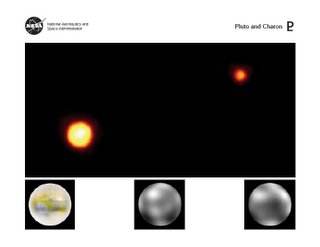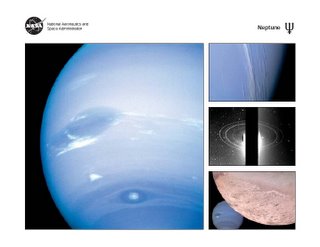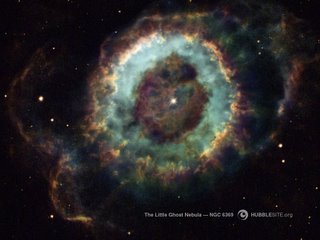 A dying star expels its outer layers, creating a planetary nebula . so called because it resembles a planet when seen with a small telescope. NGC 6369's blue-green ring marks the location where energetic ultraviolet light has stripped electrons from oxygen atoms in the gas.
A dying star expels its outer layers, creating a planetary nebula . so called because it resembles a planet when seen with a small telescope. NGC 6369's blue-green ring marks the location where energetic ultraviolet light has stripped electrons from oxygen atoms in the gas.Releases from NASA, HubbleSite, Spitzer, ESO, ESA, NASA’s Chandra X-ray Observatory, Royal Astronomical Society, Harvard-Smithsonian Center For Astrophysics, Max Planck Institute, Gemini Observatory, Subaru Telescope, W. M. Keck Observatory, JPL-Caltech, ICRAR, Webb Space Telescope, etc
Friday, December 30, 2005
The Little Ghost Nebula - Courtesy Nasa/Hubble Heritage
 A dying star expels its outer layers, creating a planetary nebula . so called because it resembles a planet when seen with a small telescope. NGC 6369's blue-green ring marks the location where energetic ultraviolet light has stripped electrons from oxygen atoms in the gas.
A dying star expels its outer layers, creating a planetary nebula . so called because it resembles a planet when seen with a small telescope. NGC 6369's blue-green ring marks the location where energetic ultraviolet light has stripped electrons from oxygen atoms in the gas.Tuesday, December 20, 2005
The Helix Nebula NGC 7293 - Courtesy Nasa/Esa
Nebula IC 2944
Thursday, December 08, 2005
Wednesday, November 23, 2005
Subscribe to:
Posts (Atom)







